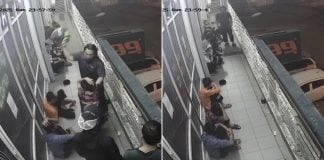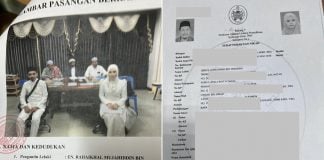Unit 9420 conducted plague research, spreading diseases for Japan’s biological warfare efforts
This piece is part of MS Explains, a segment where we provide clarity to common or key topics, making them easier to digest.
During World War II, Singapore played a key role in Japan’s biological warfare ambitions, unbeknownst to the public until recent decades.
The infamous Unit 731, known for its horrific experiments, had a branch in Singapore called Unit 9420, headquartered at a building that now houses the Ministry of Health.
This unit’s primary goal was to spread deadly diseases like the bubonic plague through weaponised fleas and plague-infected rats.
These infected fleas were later transported to China, where they infected hundreds of thousands of people. However, Unit 9420’s operations remained a dark secret for decades.
The existence of Unit 9420 in Singapore only came to light in the last 30 years, thanks to the tireless research of hobbyist historian Lim Shaobin.
After combing through wartime documents and records related to Unit 731, Lim uncovered the hidden details of OKA 9420 (Unit 9420) and its connection to Japan’s broader biological warfare efforts.
The creation of Unit 9420, Japan’s Unit 731 Southeast Asia HQ
According to documents Lim found, Unit 9420 began life as an anti-epidemic centre, with Ryoichi Naito — a physician — heading operations there.
It commenced operations at the King Edward VII College of Medicine — now the Ministry of Health building — and was named Unit 9420.

Source: CCTV
The unit’s true purpose was concealed — it was disguised as the “Southern Army Epidemic Prevention and Water Supply Department”. This location was where the rats were housed.
A 2020 video from a Unit 731 exhibition in China provided the first known footage of the laboratory in Singapore, dating back to 1942.
It is the only footage of the Japanese biological warfare unit during World War II discovered so far.
Plague research led Japanese to Southeast Asia
Unit 731, led by Surgeon General Shiro Ishii, had already been conducting research on spreading the plague in Harbin, China.
They dropped live plague bombs from low-altitude aircraft on several Chinese towns and cities, with devastating results.

Source: Infobae
The results, apparently, were “satisfactory”, according to an article about Unit 731.
Singapore, due to its tropical climate and humidity, made it an ideal location for mass-producing plague-spreading fleas.
Lim’s research revealed that Singapore became the epicentre of this deadly production, with thousands of rats bred for experimentation.
“For every 10,000 rats, 10 kilograms of rat fleas could be produced, and these fleas were most active in environments with temperatures between 27°C and 30°C and 90% humidity,” according to the information that Mr Lim uncovered.
By late 1943, Japan faced a shortage of rats in Malaya and Singapore. Hence, in response, the Japanese military transported 30,000 rats from Tokyo to Singapore by military aircraft to bolster the local rat population.
Rats infected with plague for use in biological warfare
The research on how many fleas could be bred from a kilogram of rats was precise and chilling, as Japan sought to maximise its biological weapons.
In a report by Guangzhou’s Unit 8604, they claimed they could breed 1kg of fleas from 10,000 rats, and then use these fleas to “artificially” produce a certain amount of plague-infected fleas.
However, Shiro Ishii was not satisfied. In April 1944, at a meeting of the Army Ministry Bureau Chiefs, Ishii said he had found a method to produce 1kg of toxic fleas from every 2,500 rats.
He also looked for other animals to cultivate plague-bearing fleas, such as hamsters, squirrels, guinea pigs, and dogs.
One day, Unit 9420 received a secret operation order to prepare five tons of toxic fleas for germ warfare.
Former Minister Othman Wok later shared in his biography, Never in My Wildest Dreams, that he had worked at one of these ‘rat farms,’ where he trapped and examined rats for fleas.
Besides the plague, the lab cultivated diseases such as cholera, smallpox, malaria, typhus, dysentery and anthrax.
Mr Lim told The Straits Times (ST) that the Singapore set-up “was not small”, noting: “We were like a mass production factory for biological warfare bombs.”
According to his research, people and materials from Japan or China’s Unit 731 headquarters came to Singapore first before heading to their destinations.
Japanese records stated that Unit 9420 had about 1,000 personnel.
The secretive demise of Unit 9420, records burned
As Japan neared surrender in 1945, orders were given to evacuate Unit 9420.
On 24 June, eight military trucks loaded with materials and documents left the “Southern Army Epidemic Prevention and Water Supply Department” for Thailand.
The unit “mysteriously vanished” soon after, with all records burned, erasing almost all traces of its existence.
Lim’s research has been vital in piecing together the dark history of Unit 9420, driven in part by his desire for answers after his grandfather was killed by Japanese soldiers in 1945.
While there’s no concrete evidence that human experiments took place in Singapore, records from Unit 731 suggest it is a disturbing possibility. Today, the remains of Unit 9420 serve as a reminder of Singapore’s role in one of the most chilling chapters of WWII.
Have news you must share? Get in touch with us via email at news@mustsharenews.com.
Featured image adapted from CCTV.







